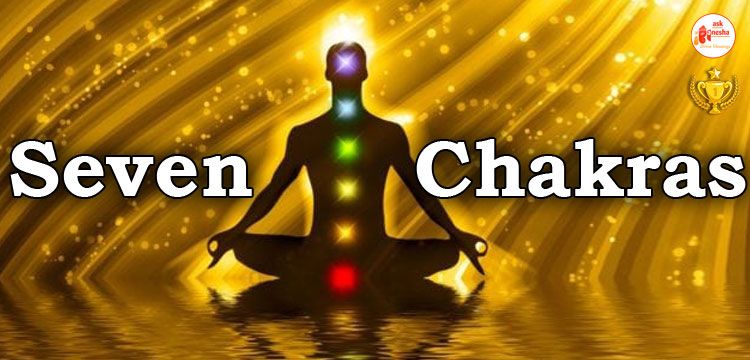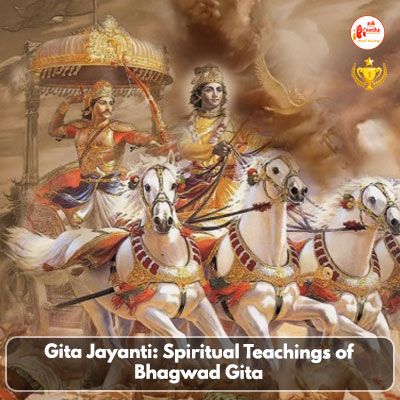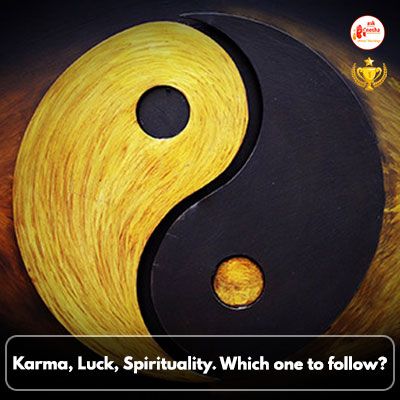The chakras are subtle energy centres inside a human body, aligned with the central channel Sushumna Nadi running through the spinal cord according to the Kunalin system of yoga. Chakras are the energy centres present inside our bodies. They perform perpetual rotational motion to trap energy inside them to later transmit it to the parts or organs that are attached to that particular Chakra or Plexus. There are seven main Kundalini chakras that are distributed along the Central channel. They provide subtle energy to various body organs, mind and intellect. However, they are primarily associated with the subtle body or the invisible body inside the physical body of a person.
What is Chakra System?
The Chakra system is a complex and ancient energy system that originated in India. The Chakras were first mentioned in the ancient sacred texts of spiritual knowledge of the Hindus dating from 1500 to 1000 BC. called the Vedas. Chakra in Sanskrit means 'wheel' which is seen as a spinning disc originating energy, and related to many nerves, organs, feelings and emotions. If they are open and aligned they are considered to be working well and sending required energy to the parts of the body they are associated with, if they are blocked or misaligned, they give rise to many physical as well as emotional troubles related to the parts of body or emotions they are associated with.
The chakras are specific frequencies defined by prana or the vital energy, distinct psychological and mental activities. We cansee the chakras as the mode of transmission that receives and emit energy and information at different frequencies. The system of the chakrascan help us in experiencing directly that the macrocosm of the Universe exists within the microcosm of the human being.
There are seven main Chakras in the body which are aligned along the spine from the base of the spine to the brain. These Chakras are Muladhara Chakra, Swadhisthana Chakra, Manipura Chakra, Anahata Chakra, Vishuddhi Chakra, Ajna Chakra, and Sahasrara Chakra. Each of these Chakras is represented by different colours, mantras and elements.
Muladhara Chakra
Colour: Red
Element: Earth
Seed Mantra: Lam
Muladhara means the Root Chakra or Root Plexus present at the base of the torso behind the perineum at the pelvic floor of any human being. Muladhara word is made with two Sanskrit words Mula meaning root or basic and Adharmeans to support. So, this Chakra or the Plexus representing the solid foundation given to the body in the form of the Earth Element is balanced to get balance in all parts of the body that are made from the element Earth.
The element earth represents all solid parts of our body like the skin, the bones, the outer membranes of all the organ systems inside our body, and all the solid parts of all the organs. Muladhara Chakra is believed to govern the physical and the emotional body. The physical strength, health of the organs of the body and emotional strength is governed by this plexus. If this Chakra is not balanced or opened properly, then the person is sure to be suffering from various physical ailments and is surely not keeping good mental health either. This Chakra regulates the stability, identity, sense of belonging, confidence, relationships and relationship with our finances.
If Root Chakra is not balanced, then the person faces an identity crisis, lack of confidence, lack of social security, lack of financial security etc. the person finds it difficult to recognise self-worth and self-esteem. Such a person cannot establish himself as a strong personality, a good worker, a good business person or as a good individual as he does not find himself worthy of all this. The lack of self-confidence lands a person in such a mess. Enhancing Muladhara Chakra with Yoga Asanas like Malasana or the garland Pose, Uttkat Asan or the chair pose Sun Salutations or the Surya Namaskar etc, Pranayama, meditation or special puja, enhances the spiritual, emotional and physical awakening of the person.
Swadhisthana Chakra
Colour: Orange
Element: Water
Seed Mantra: Vam
Swadhisthana Chakra or the Sacral Plexus is the second Chakra present in our body in our pelvic region just below our naval. Swadhisthana word is made of two Sanskrit words, Swameans self and adhisthanameans place of dwelling. So, in Sanskrit Swadhisthana means the place of self-dwelling or seat. This Chakra is associated with our most important emotion i.e. emotion of pleasure: physical as well as emotional pleasures are governed by this Chakra. This Chakra governs our creativity, procreation, dreams and fantasies. This Chakra makes one richer in life with emotions and pleasures.
The Sacral Plexus is associated with pleasure, sense of oneself, relationships, and sensuality. It governs the sexual organs in one's body, so this chakra governs the act of procreation. This Chakra contains unconscious desires especially sexual desires, that are very difficult to surpass to raise the Kundalini Shakti upward from this Chakra. Many saints try to pass it but the unconscious sexual desires won't let their conscious power raise above this Chakra, so, it is a powerful chakra. It is associated with the element of water. The Swadhisthana Chakra is mostly blocked by the fear of sense or the sense of guilt.
In our physical body, this Chakra is associated with a sense of taste and with reproduction. It is often associated with genital organs, ovaries and testes, and produce hormones like testosterone and estrogen and eventually influence the sexual behaviour of the person. People with unbalanced Swadhisthana Chakra are always full of fear, guilt, depression and stress. They cannot express themselves fully and are unable to taste the pleasures of life. They are emotionally unstable and lack pleasure in their life. One can balance this chakra by doing certain yogic poses or Yog Asanas like Utkatkonasan or the Goddess pose, VipritaVirbhadrasan or the Reverse Warrior Pose, PrasaritaPadottanasana or Wide-legged forward bend etc to balance and activate this chakra along with Pranayam, meditation and special puja.
Manipur Chakra
Colour: Yellow
Element: Fire
Seed Mantra: Ram
Manipur Chakra or the Solar Plexus is the third Main Chakra or the energy centre present in the body. This Chakra is present in the middle of the body, behind the stomach. This Chakra is associated with the Element Fire and mostly governs the digestive fire in the body. Metabolism of the body depends upon the fire associated with this Chakra. Manipur in Sanskrit means the city of jewels or lustrous gems. This Plexus is associated with the fire of digestion and transformation. The vital wind or the Prana Shakti is also found here in the balanced form and is calledSamana Vayu. Manipur Chakra is located at the place which sends nerves to all parts of the digestive system. This Chakra is activated to get balanced digestion, excretion and adrenal function in the body.
If Manipur Chakra is weak, that means the Agni is not sufficient enough to undertake a balanced digestive function, which may lead to poor excretion, assimilation, and poor adrenal functions. This all may lead to the overall poor health of the person. The thoughts, the emotions and the acidic nature of the body are also weak and imbalanced. On the other hand, if the Solar plexus is aggressive or the Agni is stronger than required then the person will have excessively high digestion, leading to more intake of food and thus, disturbed digestion, aggression, anger and disturbed thought process. Thus, what we understand from this study is, that the Solar Plexus needs to be in a balanced form all the time so that all the vital functions of the body and all the vital emotions of the body are balanced.
The Manipur Chakra can be balanced by doing yogic postures like Dhanurasan or Bow pose, Bhujangasan or the Cobra Pose, ParivritTrikonasana or the revolved Triangle pose etc, Pranayam, meditation and special puja.
Anahat Chakra
Colour: Green
Element: Air
Seed Mantra: Yam
Anahat Chakra is the fourth Chakra present in the Central Channel of the spine near the Heart, so, is also called the Heart Chakra. Anahat in Sanskrit means sound produced without touching two parts or it is also represented as the undisrupted sound inside our body. Anahat also means pure, without any stain, so it represents purity and freshness also.
Anahat Chakra is associated with the functioning of the heart, while in the endocrine system its association is considered with the thymus. It is also associated with touch, air, and the action of hands. Anahat Chakra is the seat of Jivatamaand Parashakti. Anahat Chakra can make decisions that are out of the realm of Karm unlike the lower energy Chakras of Muladhara, Swadhisthan and Manipur Chakra, which are devised to make decisions according to the realm of Karma. Anahat Chakra represents purity and freshness; thus, it is beyond the realm of Karma. At this level of Anahat Chakra, one is not bound by the laws of Karma, here at this level one can make decisions based on one's higher self and not by the unfulfilled desires and emotions. At this level, one only follows one's heart.
Anahat Chakra is the seat of love, compassion, kindness, charity and psychic healing. People feel safe, secure and happy around the people with balanced and activated Anahata Chakra, these people are full of respect and compassion for others and are always giving in nature. On the contrary, imbalanced and inactive Anahat Chakra, makes a person mean, uncompassionate and careless about the vows of others. Such people are the patients of heart ailments like Hypertension, asthma, shoulder related pains etc.
Anahat Chakra can be balanced by doing YogAsans like Ushtrasan or Camel Pose, Chakrasan or wheel pose, Lunges, Chamatkarasan or the Wild thing pose, along with Pranayam, meditation and the special puja.
Vishuddhi Chakra
Colour: Green
Element: Space
Seed Mantra: Ham
Vishuddha Chakra is the fifth Chakra in our body situated right behind our throat in the spinal arch, acting as a bridge between our mind and heart. Vishuddha Chakra is the purification centre of the body where Amrit drips from Bindu Chakra, the Chakra just above the Vishuddha Chakra, and splits into two forms: pure form and poison. When absorbed by the Vishuddha Chakra this Amrit is the nectar of immortality, and if the Throat Chakra is blocked, this Amrit enters the Manipur Chakra, functioning as poison resulting in physical degeneration.
Vishuddhi Chakra is also called the Throat Chakra. It governs all the organs around our throat like the throat, jaws, tongue, thyroid, parathyroid glands etc. In the Endocrine system, this chakra plays a very important role as it controls the secretion of all hormones to balance the functioning of the body.
The emotions and qualities attached or governed by the Throat Chakra are inventiveness, communication, self-articulation, imagination and correspondence. Vishuddhi is a Sanskrit word that means purified or purity. It is the first Chakra on the spiritual plane of the body, which helps in having a communication or unifying with the infinite consciousness of Brahman. The communication attached to this chakra is helpful in transcending space as well as time.
An overactive or blocked Vishuddhi Chakra can cause many spiritual, physical and emotional problems for the person. This imbalance can cause problems like problem in communication, fear of speaking publicly, over stubbornness, misunderstandings, loneliness and fear of sharing or imparting thoughts with others. Hypothyroidism, hyperthyroidism, sinus, hearing contamination etc. are certain physical problems one face if the Throat Chakra is not balanced.
Vishuddhi Chakra can be balanced by doing yogic postures like Halasan or the Plough Pose, Matsyendranasan or King of the fish etc. along with Pranayam, Meditation and Special Vishudhhi Chakra Puja.
Ajna Chakra
Colour: Indigo
Element: no element
Seed Mantra: Aum
Ajna Chakra is also called the Agya Chakra and is the sixth primary chakra in the human body. It is located between both the eyebrows and in the centre of the forehead, and thus is called the Third Eye Chakra too. According to Hindu traditions, the Third eye Chakra signifies the subconscious mind. It attaches a person with Brahman. Ajna is a Sanskrit word that means Beyond wisdom. It is the Chakra that gives us the power to cut through illusions and allows us to see beyond the mind and the truth. It allows the person to see both the aspects of the things without being attached to any one of them, just like a seer, or an observer, beyond pain and happiness, beyond sadness and happiness. The Ajna Chakra connects our inner world with the outer world leading to our sixth Sense through which we can have a connect with primal instincts and understand the subtle signals of nature.
It is the part of the brain which controls the central nervous system. When this chakra is fully balanced both the hemispheres of the brain function well and in synchrony. The acts of analytical thinking, logical analysis, creativity and synthetic thinking take place perfectly, leading to wise decisions and justice, and ethics.
People with imbalanced Ajna chakra are unable to have intuitions and can't think beyond what they see. Their perception towards things is biased and they cannot remain attached to things while looking at them. Thus, such people are biased, prejudiced, selfish, with low intelligence quotient and low self-esteem.
There are no special or particular asanas for Ajna Chakra balancing or activation but one can do Balasan or the child pose. There are certain processes in yoga like candle gazing called Tratak, NadiShodhanPranayam along Chanting of seed Mantra Aum.
Sahasrara Chakra
Colour: Violet
Element: no element
Seed Mantra: No seed Mantra/ Silence
Sahasrar Chakra is the seventh primary Chakra in a human body, which is present in the crown of the head aligning with the rest of the six primary chakras. Here both the Sushumna and Ida Naadis merge activating the Kundalini Shakti. In Kundalini Yoga Sahasrar Chakra is believed to be like a flower having a thousand petals in groups of twenty, which open up when the Sahasrar Chakra is activated. The balancing or activating this chakra brings pure consciousness which leads to the eternal Samadhi or Nirvikalpa Samadhi as they say in Yog Darshan. This thousand-petalled lotus-shaped Chakra is the most subtle of all the Chakras and all the other chakras are believed to be emanating from it. It is also called the door to God, the Brahmrandhra.
Sahasrar Chakra is the seat of Medha Shakti, which influences the functioning of the brain like memory, concentration and intelligence. Awakening or activating Sahasrar Chara leads to the ultimate goal of any life; self-realisation and God -realisation. It reveals the divine splendour and supreme consciousness. At Sahasrar Chakra, the human mind comes to a still, nothing engages the mind and human is away from all worldly inflictions, pleasures, attractions or diversions. Nothing affects the mind and a Yogi meditating at this level attains eternal salvation and becomes free of the cycle of birth and death.
People with blocked Sahasrar Chakra or inactive Sahasrar chakra find it difficult to focus or concentrate. They find it difficult to detach themselves from the materialistic distractions and connect with their inner selves. Sahasrara Chakra can be activated or balanced by doing yogic postures like Shirshasana or the Headstand, Sasangasan or the Rabbit Pose, Shavasana or the Corpse pose, along with pranayama, meditation and special puja.
























 Translate
Translate